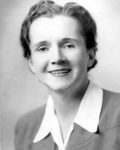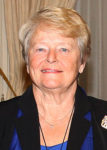Awakening: Emergence of Climate Leadership from Silent Spring to Inconvenient Truth

Excerpt from Life After Carbon, chapter 2, "Urban Climate Innovation Laboratories"
Before climate change arrived in the headlines in the late 1980s, the groundwork for climate leadership had been laid. The creators of urban climate innovation labs span three overlapping generations, each of which experienced its own jolt of awakening and urgent call to action. 
Those who are in their sixties, seventies, or eighties were present when the environmental movement came to life, assembling for the first Earth Day in 1970, spurred by biologist Rachel Carson’s 1962 book, Silent Spring, which warned of the dire impact of pesticides, and by the mounting, visible crises caused by hazardous and toxic industrial processes.
City innovators in their forties and fifties, many of whom are entering positions of substantial authority in government, business, and the civil sector, were coming of age when a 1987 United Nations report, “Our  Common Future”—known as the Brundtland Report after its chair, Gro Harlem Brundtland, Norway’s first female prime minister—put a new idea onto society’s radar screen. It offered “sustainable development” as an overarching concept in which the use of physical ecosystems and renewable resources would occur “within the limits of regeneration and naturalgrowth.” Brundtland called for action by all nations but also signaled the importance of cities: “The most immediate environmental concerns of most people will be urban ones.”
Common Future”—known as the Brundtland Report after its chair, Gro Harlem Brundtland, Norway’s first female prime minister—put a new idea onto society’s radar screen. It offered “sustainable development” as an overarching concept in which the use of physical ecosystems and renewable resources would occur “within the limits of regeneration and naturalgrowth.” Brundtland called for action by all nations but also signaled the importance of cities: “The most immediate environmental concerns of most people will be urban ones.”
These two generations were joined by a third generation of innovators that arrived after the dawn of climate-change awareness. The commitment of countless numbers of twenty-and thirty-year-old innovators, many of whom are raising young children, was sparked by Al Gore’s 2006 documentary film, An Inconvenient Truth, which detailed the advent of global warming, argued that the means were available to reverse the trend if only there was the political will to act, and called on viewers to take personal responsibility for solving the problem.
whom are raising young children, was sparked by Al Gore’s 2006 documentary film, An Inconvenient Truth, which detailed the advent of global warming, argued that the means were available to reverse the trend if only there was the political will to act, and called on viewers to take personal responsibility for solving the problem.


